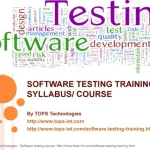- Internet of Things (IoT) Applications in ECE:
- Introduction to IoT and its significance in modern ECE.
- IoT-based smart agriculture systems for improved crop management.
- Healthcare monitoring systems using IoT devices.
- Smart city solutions integrating IoT sensors for efficient resource management.
- Security challenges and solutions in IoT networks.
Advertisements
- Artificial Intelligence (AI) in ECE:
- Fundamentals of AI and its applications in ECE.
- AI-driven autonomous vehicles: technology and challenges.
- AI-based speech recognition systems for enhanced communication.
- Machine learning algorithms for signal processing and pattern recognition.
- Ethical considerations in the deployment of AI in ECE applications.
- Wireless Communication Technologies:
- Evolution of wireless communication standards (2G to 5G).
- Beamforming techniques for enhancing wireless communication performance.
- Massive MIMO (Multiple-Input Multiple-Output) technology for 5G networks.
- Cognitive radio systems for spectrum efficiency.
- Future prospects of wireless communication beyond 5G.
Advertisements
- Biomedical Signal Processing:
- Introduction to biomedical signal processing and its importance.
- Electrocardiogram (ECG) signal analysis for cardiac health monitoring.
- EEG-based brain-computer interfaces (BCIs) for assistive technologies.
- Signal processing techniques for analyzing medical images (MRI, CT scans).
- Wearable biosensors for continuous health monitoring.
- Embedded Systems and Internet of Things (IoT):
- Embedded systems design methodologies and architectures.
- Real-time operating systems (RTOS) for embedded applications.
- IoT-enabled home automation systems for smart living.
- Embedded vision systems for surveillance and security.
- Energy-efficient design considerations in embedded systems.
- Robotics and Automation:
- Overview of robotics and automation technologies.
- Industrial automation using robotic arms and PLCs (Programmable Logic Controllers).
- Robotic exoskeletons for rehabilitation and assistive purposes.
- Swarm robotics: cooperative behavior in multi-robot systems.
- Ethical implications of robotics and automation in society.
Advertisements
- Nanotechnology in Electronics:
- Introduction to nanotechnology and its applications in electronics.
- Nanoelectronic devices: nanotransistors, nanosensors, and nanomaterials.
- Nanofabrication techniques for semiconductor devices.
- Carbon nanotubes and graphene-based electronics.
- Future directions and challenges in nanoelectronics.
- Renewable Energy Systems:
- Role of renewable energy in sustainable development.
- Solar photovoltaic (PV) systems: design and optimization.
- Wind energy conversion systems (WECS) for power generation.
- Energy storage technologies: batteries and supercapacitors.
- Microgrid systems for decentralized energy distribution.
- Cybersecurity in ECE:
- Importance of cybersecurity in electronic systems.
- Cryptographic techniques for secure data transmission.
- Intrusion detection and prevention systems (IDPS) for network security.
- Secure hardware design principles for protecting against side-channel attacks.
- Cyber-physical systems security challenges and solutions.
- Quantum Computing:
- Basics of quantum computing and its potential impact on ECE.
- Quantum algorithms for solving complex problems in signal processing.
- Quantum cryptography for secure communication.
- Quantum machine learning: applications and challenges.
- Current limitations and future prospects of quantum computing.
Some Other Technical Seminar Topics for ECE Students
5G Technology: Explore the latest advancements in 5G technology, including its architecture, features, and applications.
Internet of Things (IoT): Discuss the concept of IoT, its components, applications, and challenges in implementation.
Artificial Intelligence in ECE: Explore how AI is transforming the field of electronics and communication, including applications like speech recognition, image processing, and autonomous systems.
Machine Learning for Signal Processing: Delve into the use of machine learning algorithms for signal processing tasks such as noise reduction, image enhancement, and pattern recognition.
Blockchain Technology: Discuss the fundamentals of blockchain technology and its potential applications in ECE, such as secure communication and decentralized networks.
Wireless Power Transfer: Explore various techniques and technologies for wirelessly transferring power, including electromagnetic induction and resonance-based methods.
Embedded Systems: Discuss the design, development, and applications of embedded systems, including real-time operating systems and microcontroller-based projects.
Photonics: Explore the principles of photonics and its applications in communication systems, including optical fiber communication and photonic integrated circuits.
Nanotechnology in Electronics: Discuss how nanotechnology is revolutionizing electronics, including nanomaterials, nanoelectronics, and nanosensors.
Biomedical Signal Processing: Delve into the processing and analysis of biomedical signals, such as electrocardiograms (ECG) and electroencephalograms (EEG), for applications in healthcare monitoring and diagnosis.
Smart Antennas: Explore the design and implementation of smart antenna systems for wireless communication, including beamforming techniques and adaptive array antennas.
VLSI Design and Testing: Discuss the latest trends and challenges in very-large-scale integration (VLSI) design and testing, including low-power design techniques and built-in self-test (BIST) methods.
Robotics and Automation: Explore the intersection of electronics and robotics, including topics such as sensor integration, control systems, and autonomous navigation.
Biometric Security Systems: Discuss the principles and applications of biometric authentication systems, including fingerprint recognition, iris scanning, and facial recognition.
Cognitive Radio: Explore the concept of cognitive radio and its applications in dynamic spectrum access, spectrum sensing, and interference mitigation.
Benefit of Technical Seminar Topics for ECE Students
- Enhanced Understanding: Engaging in seminar topics helps students deepen their understanding of specific areas within ECE. Through research and presentation, they gain insights into advanced concepts and applications.
- Knowledge Expansion: Seminars expose students to the latest developments and trends in the field. They learn about cutting-edge technologies, methodologies, and research findings, expanding their knowledge beyond the scope of their regular coursework.
- Critical Thinking Skills: Researching and presenting seminar topics require students to analyze information critically, evaluate its relevance, and draw conclusions. This fosters the development of critical thinking skills essential for problem-solving in engineering.
- Communication Skills: Presenting technical seminars improves students’ communication skills, both verbal and written. They learn how to effectively convey complex ideas to diverse audiences, enhancing their ability to communicate with colleagues, clients, and stakeholders in their future careers.
- Presentation Skills: Delivering seminars hones students’ presentation skills, including public speaking, slide design, and audience engagement. These skills are valuable not only in academic settings but also in professional environments where clear and effective communication is crucial.
- Research Abilities: Conducting research for seminar topics helps students develop research abilities, including information gathering, literature review, and data analysis. These skills are transferable and beneficial for academic pursuits as well as professional projects.
- Exposure to Diverse Topics: Seminars expose students to a wide range of topics within ECE, allowing them to explore areas of interest and potential career paths. This exposure helps them make informed decisions about their academic and professional pursuits.
- Networking Opportunities: Seminars often involve interactions with professors, industry experts, and fellow students, providing networking opportunities. Building connections in the field can lead to collaborations, internships, and job opportunities in the future.
- Preparation for Future Roles: The research, presentation, and communication skills gained through seminar participation prepare students for various roles in academia, research, industry, and entrepreneurship. They develop the versatility needed to adapt to evolving technological landscapes and excel in their chosen careers.
Questions and Answers Related to Technical Seminar Topics
Question: What is 5G technology?
Answer: 5G technology is the fifth generation of wireless communication technology, offering higher data rates, lower latency, and increased network capacity compared to its predecessors.
Question: How does Internet of Things (IoT) impact the field of electronics and communication?
Answer: IoT enables the interconnection of devices and systems, creating opportunities for remote monitoring, automation, and data analytics in various ECE applications.
Question: What are some real-world applications of Artificial Intelligence in ECE?
Answer: AI is used in ECE for speech recognition, image processing, natural language processing, autonomous systems, and predictive maintenance, among other applications.
Question: What role does Machine Learning play in signal processing?
Answer: Machine learning algorithms are used in signal processing for tasks such as noise reduction, image enhancement, pattern recognition, and classification.
Question: How does Blockchain technology ensure security in ECE applications?
Answer: Blockchain technology provides secure and tamper-proof data storage and transmission, making it suitable for applications such as secure communication, data integrity verification, and decentralized networks.
Question: What are the different techniques for wireless power transfer?
Answer: Techniques for wireless power transfer include electromagnetic induction, resonant inductive coupling, and radio frequency (RF) energy harvesting.
Question: What are some examples of embedded systems in everyday devices?
Answer: Examples of embedded systems include microcontroller-based devices such as smartphones, digital cameras, wearable devices, and home appliances.
Question: How is photonics used in communication systems?
Answer: Photonics is used in communication systems for optical fiber communication, laser-based transmission, photonic integrated circuits, and optical sensors.
Question: What are the potential applications of nanotechnology in electronics?
Answer: Nanotechnology has applications in nanoelectronics, nanomaterials, nanosensors, and quantum computing, enabling advancements in miniaturization, performance, and energy efficiency.
Question: How are biomedical signals processed for healthcare applications?
Answer: Biomedical signals such as ECG and EEG are processed for tasks such as monitoring, diagnosis, and treatment planning using signal processing algorithms and machine learning techniques.
Question: What are smart antennas and how do they improve wireless communication?
Answer: Smart antennas are antenna arrays with adaptive beamforming capabilities, allowing for directional signal transmission and reception, which improves signal quality, range, and capacity in wireless communication systems.
Question: What challenges are associated with VLSI design and testing?
Answer: Challenges in VLSI design and testing include power consumption, heat dissipation, signal integrity, design complexity, and ensuring reliability and manufacturability.
Question: How are robotics and automation integrated with electronics and communication systems?
Answer: Robotics and automation systems use sensors, actuators, control systems, and communication protocols to perform tasks such as industrial automation, autonomous vehicles, and robotic surgery.
Question: What are some examples of biometric security systems?
Answer: Examples of biometric security systems include fingerprint scanners, iris recognition systems, facial recognition systems, and voice authentication systems.
Question: How does cognitive radio enable dynamic spectrum access?
Answer: Cognitive radio systems use spectrum sensing and cognitive decision-making algorithms to dynamically access unused spectrum bands, improving spectrum efficiency and reducing interference.
Latest Posts
- Step-by-step guide to download and apply for jee mains admit card 202
- Comprehensive 2025 government holidays and recruitment details for job seekers
- JEE Mains Admit Card 2025: Your Step-by-Step Guide to Downloading the Hall Ticket
- Everything You Need to Know About 2025 Government Holidays Recruitment
- Comprehensive Guide to rrb d group recruitment 2025 – Eligibility, Vacancies, and Application
- Detailed guide to nps trust recruitment 2025 vacancies, eligibility and apply process
- Comprehensive guide to hpcl recruitment 2025 notification, vacancies, and application process
- ignou bed admission 2025 complete recruitment guide with eligibility and process
- Comprehensive Guide to Indian Army Agniveer Recruitment 2025 Notification and Jobs
- Everything You Must Know About CBSE Board Exams 2025 Changes & New Rules






